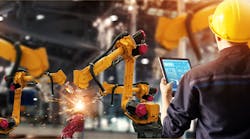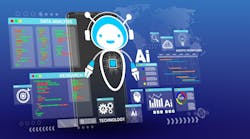Automation Won’t Fix a False Sense of Lean Maturity
The last few years have shaken the assumptions of the manufacturing industry. Supply chains and labor sources that had been dependable and robust crumbled before our eyes as the coronavirus spread. It showed us that the systems we had built were not nearly as reliable as we thought they were. Perhaps it was due to worldwide procrastination—too many companies not giving real credence to the potential of a global event, and failing to prepare for the fallout. Whatever the case may be, we live in a world where the fragility of the old status quo has been made clear, and the need for a new level of adaptability and resilience is apparent. But how?
Drishti recently completed a survey that highlighted how 400 leaders in the manufacturing world are thinking about adaptability, which, with 59% expecting the industry to change significantly in the next few years, is top of mind.
In order to be adaptable and prepare for uncertainty, most respondents (62%) stated that they intended to invest in new technology to target increased efficiency and stabilization. By investing in technology, they mean investing in more automation and improving factory infrastructure.
Investing in automation sounds logical until you consider that 73% of the respondents also agreed with the statement, “The more manual you are, the more adaptable you are.”
The paradox shows a discongruity about how to fix the problem: On the one hand, claiming that more automation is needed to be prepared for uncertainty, while on the other, saying that the key to being adaptable is increasing manual operations. Let’s dig into the cause of this asymmetry.
The Myth
There is a myth in the world, even within manufacturing itself, that factories are filled with assembly lines with full automation and robots. While there are increases in the amount of automation deployed generally, fully automated “lights-out” factories couldn’t be further from the truth. In fact, manufacturing is a $15 trillion industry, making up nearly 13% of the world GDP, with 70% of assembly tasks still performed by people.
Therefore, by the numbers, people are still the key to adaptability. It may be attractive to try and dispense with people, as they are also the cause of 69% of variability on the line, but people’s cognitive and creative abilities allow them to quickly adapt and conform to new products, tools and process changes. Humans can perform precision movements and large sweeping tasks (in multiple stations) with little to no delay in between.
It’s this variability that can make automation seem like an attractive solution. Organizations have real concerns about people, especially since the start of the pandemic. Nineteen percent of survey respondents say that they’ve had trouble finding enough line associates to fill their shifts and 16% have concerns about knowing what’s happening on the floor when leadership can’t necessarily be there physically. These issues add to the variability problem—but there are more effective ways to deal with variability.
The Classic Answer
In an attempt to combat variability and increase quality and efficiency, most operations elect to adopt a lean manufacturing system. These systems are incorporated into the operation with varying results, depending on the level of lean maturity they have achieved. This varies from least mature (awareness and sporadic improvement activities) through most mature (exceptional, fully deployed, recognized as best practice—a rare achievement).
There is a maturity curve pertaining to how lean an organization is. An example of the topmost level of maturity would be full implementation of the Toyota Production System (TPS), a level 5 in a 1-5 scale of lean maturity. Full implementation means that the system is exceptionally well defined, deployed across the entire organization in all value streams and recognized as best practice. A beginner on the curve (level 1 or 2 on the 1-5 scale) is defined as having some general awareness of lean practices with sporadic improvement activities. The standard definitions for lean maturity for respondents came from the Lean Advancement Initiative's Enterprise Self Assesment Tool (LESAT), a program at MIT.
Most organizations haven’t reached full maturity yet because of the difficult and intensive nature of adoption. The more mature a company is, the more efficient it tends to be.
Unfortunately, most companies tend to assess themselves at a higher level of lean maturity than they are. According to the survey, more than 38% of all respondents claim to be a level 4 or 5 on the lean maturity curve. The reality is that this percentage should be much lower, according to Jeffrey Liker, author of “The Toyota Way.” The thinking can easily be extrapolated to the rest of the curve.
The inflated self-assessment, regardless of reason, can be problematic— it can lead to the belief that they have maximized the efficiency and effectiveness of the human resources they have within their value streams. Leaders begin doubting that there is a more effective way to utilize their people and thus, begin the discussion about automation, which runs counter to the logic of adaptability.
Into what should an organization invest its time and resources, then?
Organizations can double down on lean and invest in their people with human augmentation technology that adheres to lean principles like standardized work adherence and continuous improvement, and supplements human effort rather than replaces it.
With tools such as artificial intelligence, machine learning and vision systems, people can reach new levels of productivity.
While humans are incredibly adaptable and possess greater problem-solving skills and manual dexterity, they fall short in their cognitive ability to observe data in real time. Even in the best lean environments, problem-solving works in a cycle within an organization — occurrence, detection, reaction and correction. The problem definition alone can take a long time — how long does an efficiency engineer have to stand on the line with a clipboard and stopwatch before finding the root cause of an issue? AI-powered vision systems can report what’s happening at all stations concurrently and let a human know within seconds whether a process was outside of acceptable bounds. More time can then be spent solving the issue and knowing that the team is solving the correct problem.
The possibility of training a new employee even faster, reducing waste or seeing a problem in real time is invaluable — each will show real ROI on the bottom line but ultimately give more time for leaders to focus on solving the real issues. Implementing the tools gives the mental space and time for people to do what they do best. Using these tools to supplement a sound lean manufacturing system creates the best scenario in both adaptability and efficiency.
Adaptibility Is Key
Business leaders seem to largely agree that adaptability is the key to a business thriving amidst uncertainty. Now more than ever, we can see how unpredictable the world is. We can also see that people are the key to adaptability and still the primary mover in manufacturing. Supporting your people with technology while implementing solid lean methodologies can result in the best of both worlds in terms of adaptability and efficiency to the benefit of your most valuable resource—the workers.
Prasad Akella led the industry/university team that built the world’s first collaborative robots at GM (“cobots”, projected to be a $12B market by 2025). He’s the founder and CEO of Drishti, a company deploying AI to collaborate with and enhance humans on the factory floor.





